Economic Sustainability Reference Model (ESRM) Report
Building on the work of the Blue Ribbon Task Force for Sustainable Digital Preservation and Access, the ESRM is best understood as a strategic tool for planning and discussion aimed at executive and managerial rather than operational level staff. Its purpose is to provide a foundation for progress in the development of successful sustainability strategies for digital curation. It does this by organising the problem space; providing a common reference point of concepts and vocabulary; and introducing a layer of abstraction that hides the complexities and idiosyncrasies of individual implementations and contexts, while at the same time embodying sufficient detail to support substantive discussions of shared issues.
The ESRM organises its discussion of economically sustainable digital curation around the concept of a sustainability strategy which is composed of several key components:
- Economic lifecycle: the economic “context” in which curation occurs
- Sustainability conditions: the conditions that must be met to achieve sustainability
- Key entities: the curation environment, including digital assets; the curation process; and stakeholders that must make decisions to ensure the sustainability conditions are met
- Economic uncertainties: forms of uncertainty that present challenges in regard to achieving the sustainability conditions
- Some high level assertions can also be extracted from the model which may provide a good starting point for general discussion (and which relate to the key entities section).
- The properties of digital objects must be realistically examined and understood before they can be defined as assets;
- Sustaining digital assets (the process) is complicated but not impossible to organise and understand if you take the view that it is about ensuring there is sufficient ‘return on investment’;
- The assets and the processes are not themselves intrinsically important: the crucial issue is whether the value of the assets is sufficiently understood by the relevant stakeholders
The report contains a full elaboration of the ESRM and the objective of this phase of the 4C project is to make this version widely available to the community for comment, critique and use. As it stands the ESRM is already a useful engagement tool for the 4C Project but the model itself will only become an effective and useful reference model if a consensus builds around it.
